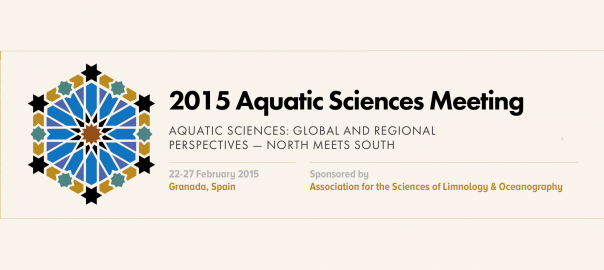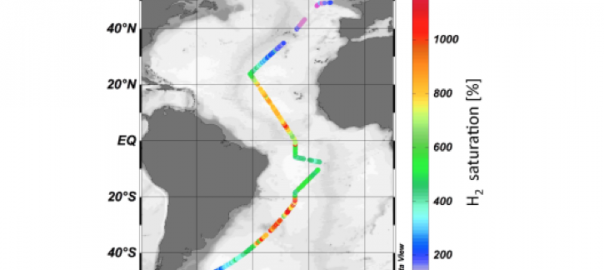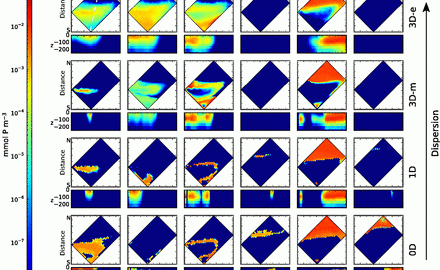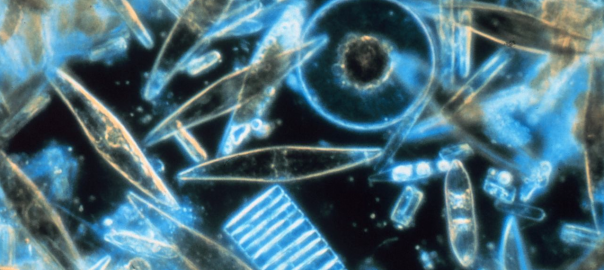Villar, E., Farrant, G.K., Follows, M.J., et al, 2015, Environmental characteristics of Agulhas rings affect interocean plankton transport. Science, Vol. 348 no. 6237, doi: 10.1126/science.1261447
Category Archives: Research
Alexandra Z. Worden, Michael J. Follows, Stephen J. Giovannoni, Susanne Wilken, Amy E. Zimmerman, and Patrick J. Keeling (2015) Rethinking the marine carbon cycle: Factoring in the multifarious lifestyles of microbes. Science 13 February 2015: Vol. 347 no. 6223, doi: 10.1126/science.1257594

2015 Aquatic Sciences Meeting
Darwin researchers Stephanie Dutkiewicz, Jonathen Lauderdale, David Talmy, and Darcy Taniguchi are off to Granada, Spain this month to attend the the Association of the Sciences of Limnology, and Oceanography (ASLO) 2015 annual meeting taking place from 22-27 February. Continue reading 2015 Aquatic Sciences Meeting

Life on the Edge – How shifting marine province boundaries could provide a new metric for global change
In their new competition theory paper, appearing in the 2014 issue of Biogeosciences, Dutkiewicz et al examine the sensitivity of the biogeography of nitrogen fixers to a warming climate and increased aeolian iron deposition in the context of a global earth system model. Continue reading Life on the Edge – How shifting marine province boundaries could provide a new metric for global change

Mapping Nitrogen Fixation? Follow the Hydrogen.
The nitrogen cycle is fundamental to Earth’s biogeochemistry. Yet major quantitative uncertainties remain, particularly regarding the global oceanic nitrogen fixation rate. Continue reading Mapping Nitrogen Fixation? Follow the Hydrogen.
Dutkiewicz, S., Ward, B. A., Scott, J. R., and Follows, M. J. (2014) Understanding predicted shifts in diazotroph biogeography using resource competition theory, Biogeosciences, 11, 5445-5461, doi: 10.5194/bg-11-5445-2014.
Moore, R.M., M. Kienast, M. Fraser, J. Cullen, C. Deutsch, S. Dutkiewicz, M.J. Follows, and C.J. Somes (2014), Substantial underestimation of nitrogen fixation suggested by hydrogen supersaturations in the Atlantic, Journal of Geophysical Research - Oceans , 119, 4340-4350, doi: 10.1002/2014JC010017.

Mixing Down Diversity
Phytoplankton are an extremely diverse set of floating, microscopic organisms, which are freely transported by water movements (current, eddies, etc.) and make up the base of the oceanic food web. This work, published in the September issue of Limnology & Oceanography: Fluids & Environments, explores how their diversity is affected by dispersal by different scales of motions in the ocean. Continue reading Mixing Down Diversity

Broadening the ‘SCOPE’ of microbial oceanography
With an infusion of funds from the Simons Foundation, a collaboration Darwin Project lead Mick Follows and other MIT researchers and colleagues will break new ground in the study of marine microbes. Continue reading Broadening the ‘SCOPE’ of microbial oceanography
Levy, M., O. Jahn, S. Dutkiewicz, and M.J. Follows (2014), Phytoplankton diversity and community structure affected by oceanic disperal and mesoscale turbulence, Limnology and Oceanography: Fluids and Environment, 4, 67-84, doi: 10.1215/21573689-2768549.